It’s an extraordinary time for innovation. The evolution of technology and organisational change are on the up, and businesses are adopting and experimenting with new methodologies for innovation at an increasing rate. Whilst every organisation has a desire to be “innovative”, creating a culture of innovation and nurturing that culture is a challenge for businesses of all shapes and sizes.
Here at Dootrix, we’re proud to be innovation partners of some pretty exciting businesses including Clancy Docwra, Confused.com and more. Our ambition is to be the most valued innovation partner in the UK. One of the questions we get asked most frequently by our clients and prospects is: “outside of introducing an external innovation partner, how do you bake innovation into the cultural DNA of an organisation?”
That’s a toughy.
The answer is complex. It encompasses nurturing talent, building positive and collaborative relationships, implementing new ways of working, embracing disruption, prioritising and measuring learning and respecting failure. There are a number of formulas you could look to, from McKinsey to Towers Watson, but what does it look like in practice?
With that in mind, we wanted to share our own practical example of how we foster a culture of innovation within our organisation. A culture that keeps our people engaged, that keeps us on the cutting edge and pushes us forward on our journey to becoming the most valued innovation partner in the UK.
Looking to the future...
If you follow us on Instagram (you should!), you will have seen that Fridays are a special day at Dootrix. On Friday afternoons, we dedicate time to an internal initiative we call ‘Future Fridays’.
Future Fridays is our platform for promoting innovation within Dootrix and weaving some of the idioms from above, into our day to day. Future Fridays enables us to work collaboratively in dedicated teams, to solve a common challenge in an 8-week process that takes us from a concept through to a high fidelity prototype. We then deliver design and development debriefs back to the business to share the things we’ve learnt on the journey.
We set up small teams that work through the process in an agile fashion, with weekly standups and progress tracked through Azure DevOps. Essentially, we define a challenge, ideate a solution, explore the technology, build a prototype and prepare a detailed debrief.
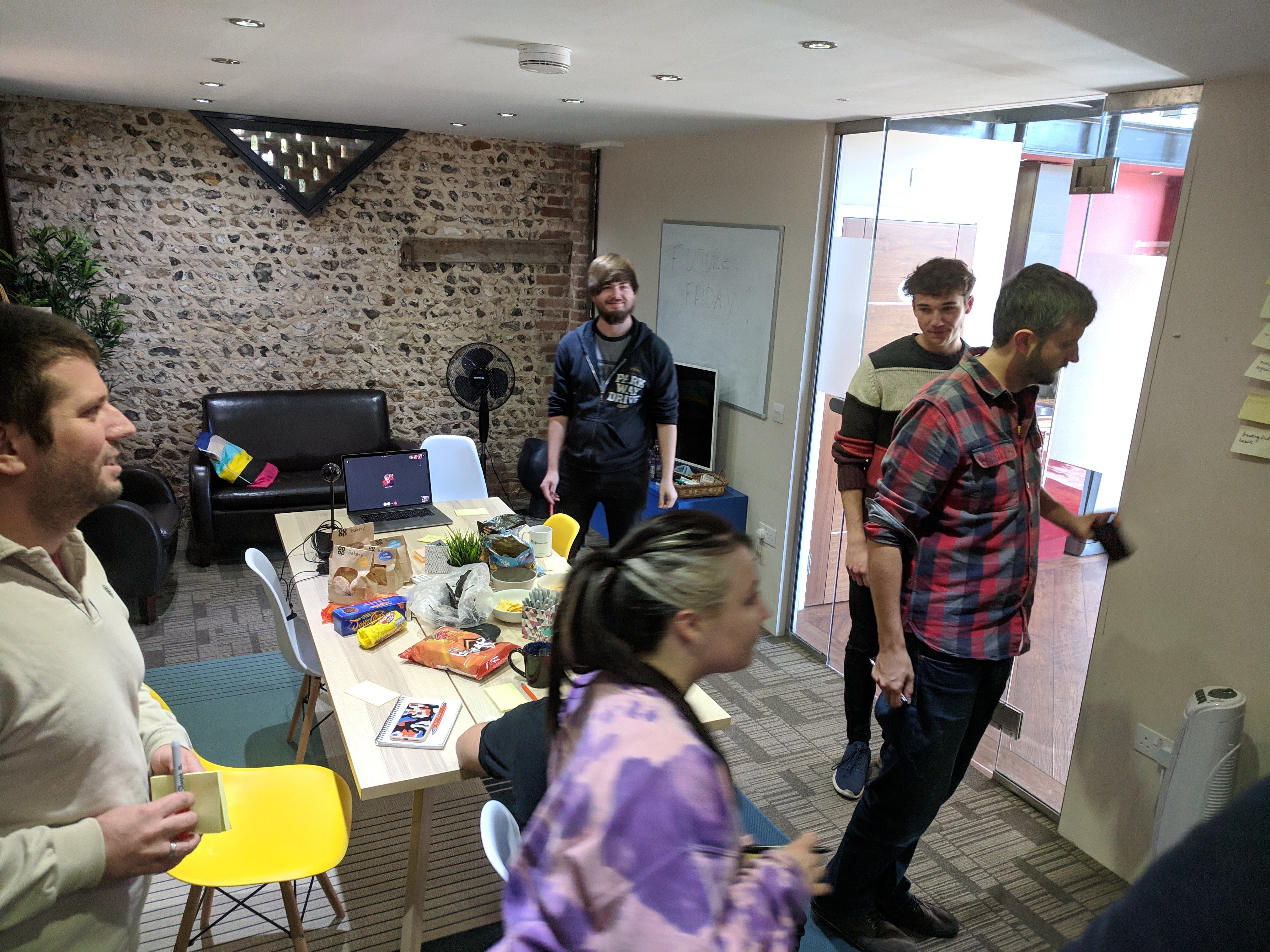
It gives our people the opportunity to explore and experiment with the latest tools and technology, within a hypothetical business context that simulates the way in which our clients often engage with us.
When creating our teams, there are a few things we take into consideration to encourage collaboration, knowledge sharing and to facilitate learning:
- We make sure we have a balance of skill sets in design, development and specific tools
- We make sure we have a good blend of experience, from heads of function down to the newest members of our team
- We make sure to mix people with colleagues outside of their day to day client projects
Enter team triangle, team square & team circle.

Week 1
Once the teams have been created, we get together to reveal our common challenge. In order to ensure we have the opportunity to truly explore, we keep the theme of the challenge as broad as possible. This enables the teams to reinterpret the challenge into a unique problem and solution in their own way, promoting ideation and problem solving skills. In our most recent iteration, we set the challenge as “household management”.
We then get into our teams to begin to define and interpret the challenge in more detail. The first week is an exercise in design thinking. The teams take the challenge and list their top problems within this arena. The team then use dot voting, to select the problem they want to focus on.
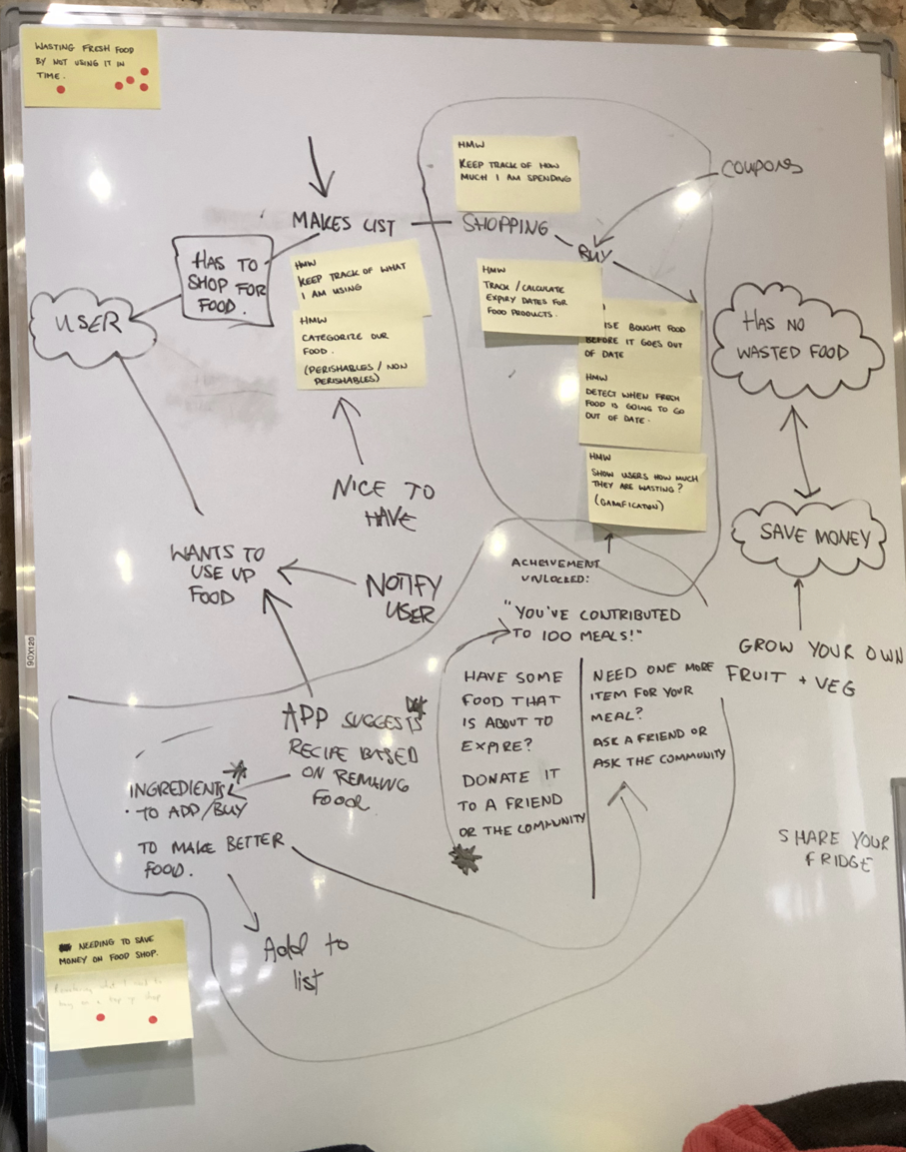
We then reframe that problem into a ‘how might we’, a simple question that takes that problem and focuses on the opportunity it presents and guides our direction for the rest of the process. For our “household management” example the teams produced some quite unique ‘how might we’s’ for our common challenge.
Triangle: How might we overcome the paradox of choice when trying to decide what to watch on TV?
Square: How might we help families minimise food wastage?
Circle: How might we help families complete their chores?
The teams then move into storyboarding. They spend time brainstorming ideas and concepts for their digital products and mapping out key features to focus on. They then begin to create some basic wireframes to generate ideas for screens and features.
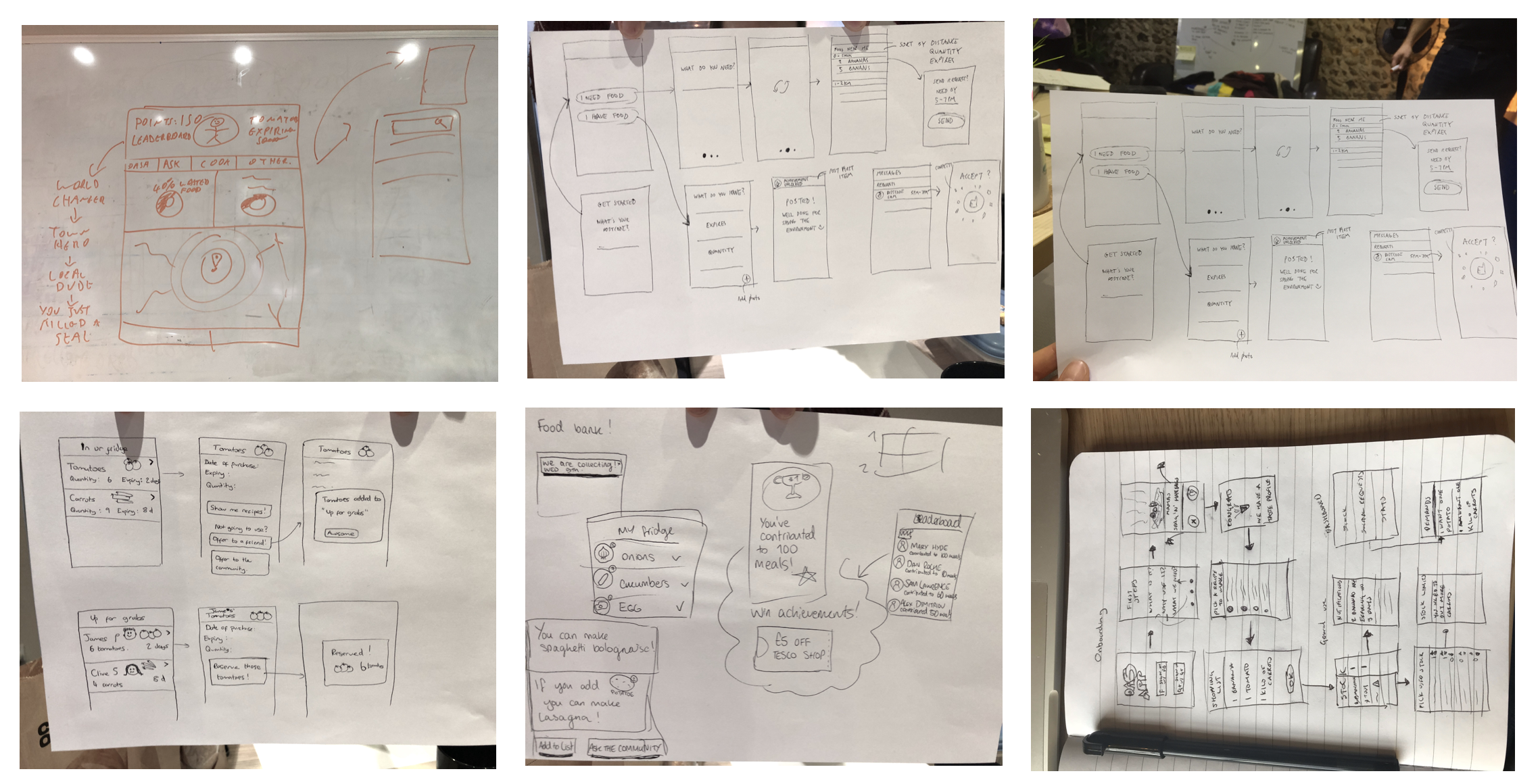
At the end of week one - each team has an established concept and we’re ready to start exploring…
Triangle: EmoteControl: an app that recommends movies/TV shows by examining your selfies
Circle: Chores: an app that helps the family gamify the completion of chores around the house
Square: Up for grabs: an app that allows users to donate food from their homes that would otherwise go to waste

Week 2...to 7
So with our concepts pinned down, the teams then work together to identify and explore the technology behind the products and build the prototypes. For the designers, this involves user research, UI design and examining new tools to help shape the high fidelity prototypes. For the developers, they’re exploring new platforms, frameworks, SDKs, and experimenting with a range of tools for how they would approach engineering their product.
Triangle: Experimenting with UI tools such as Framer X to build videos into our prototype. Making use of Microsoft Azure’s cognitive services and Xamarin, understanding how we would interact with the API and using this sample to understand what data we get back and how we leverage that data to effectively map users facial information to recommend movies/tv shows
Circle: Deep-diving into interaction design and UI to engage our specific demographic, families with young children. Exploring new technologies outside of our experience to engineer our app including Kotlin and Node.JS for programming, Protocol Buffers and gRPC for frameworks and Mongo DB for database management.
Square: Creating a design language of bespoke iconography and creating a custom animation to drive a great user experience. Looking to a range of technologies to help broaden our experience. Making use of react native for our framework to allow us to build the app using Javascript and React. Using the Expo SDK to provide access to a mobile device’s system functionality (camera, local storage etc.)
Each week, the teams work together and set tasks to explore and experiment, delving into the specifics of both design and development elements of their projects. Every week the teams catch up to review progress and push towards the finale: a detailed presentation of final product and design and development learnings.
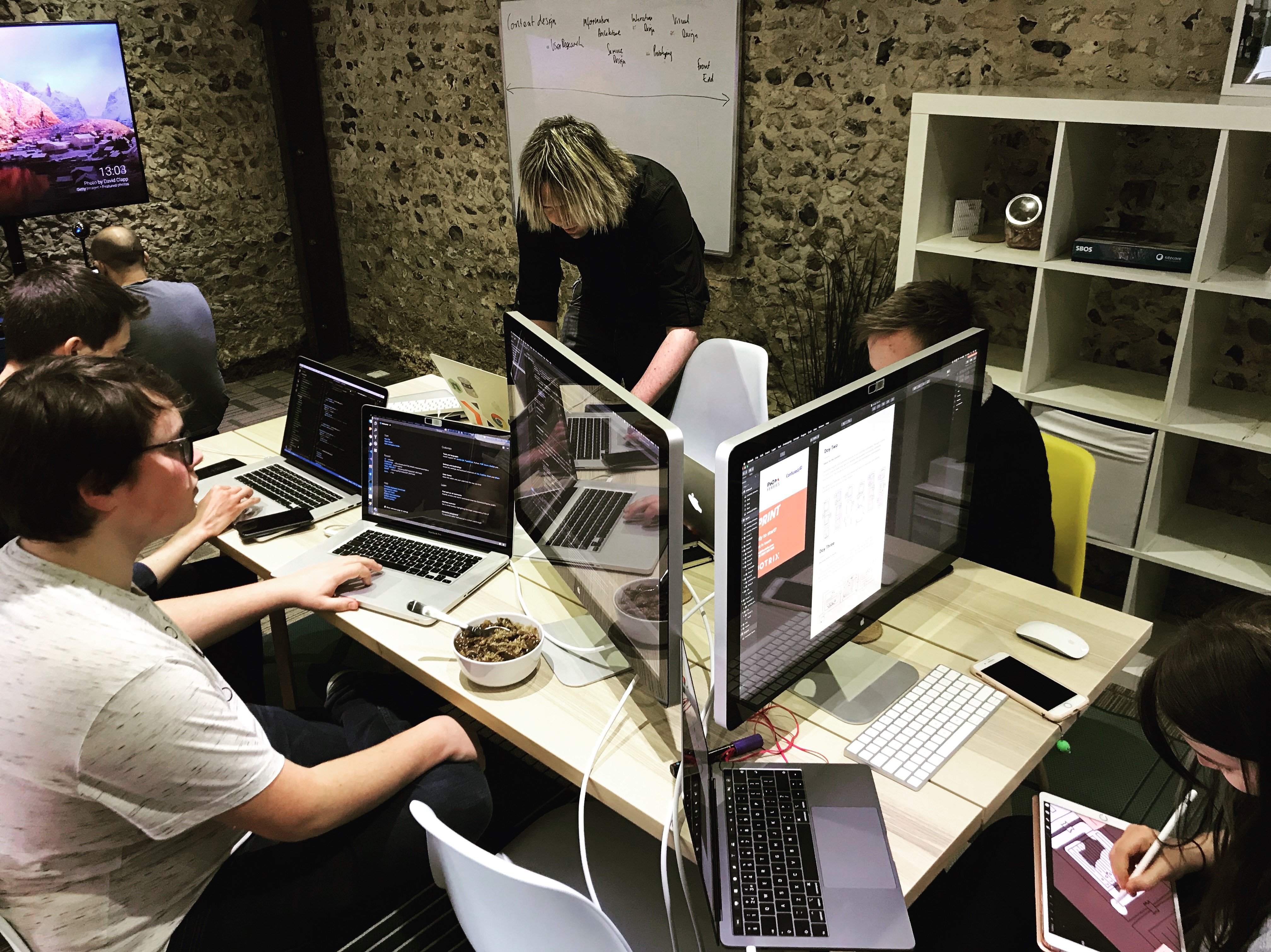
Week 8
For the final week, the teams come together and present back to the business. We give an overview of the product, demo their high fidelity prototypes and share the design and development learnings in detail with technical documentation available for future reference.
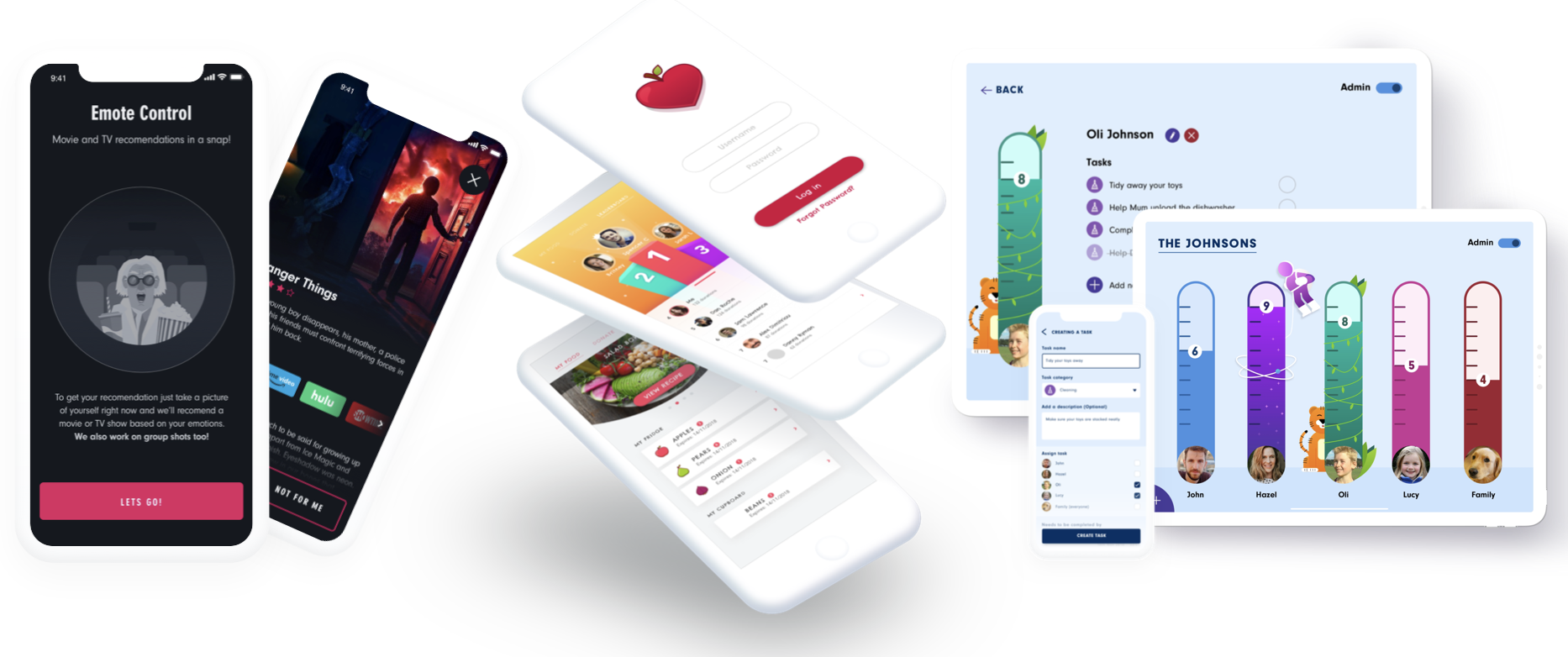
Once the presentations are complete, we get ready to start all over again for the next cycle!
Summary
So there is it! Future Fridays elucidated. We hope that in sharing our own practical example of how we nurture our culture of innovation, we will be able to provide you with some inspiration for your own internal innovation initiatives. To summarise, here are our top tips for building a culture of innovation into your DNA:
- Bring your team together around a common ambition to drive innovation forward within your organisation. You can ladder this up to the values of your organisation or into your vision for the future.
- Give your employees a structure to work in, whether this is time broken out of the ordinary working week or run as an on-going internal project. This will empower your people to step away from business as usual, to focus on driving innovation forward.
- Ensure you identify ways to prioritise collaboration and communication. We include regular stand-ups, progress tracking and full debriefs back to the business. This enables us to share what we’ve learnt and keep us focused on our goal. This practice also helps the learnings from Future Friday permeate our day to day project work.
- Give employees the tools to expand their horizons. It’s great to generate new ideas but the best innovation initiatives give the individuals involved the tools and frameworks to understand how to take those ideas and shape it into a positive outcome, for future work or projects they’re working on right now.
- Create a safe space for exploration and experimentation. This is true of structure and time but also of attitude and behaviours. Encouraging your employees to seek, to try and to fail is important. Failure must be embraced as an opportunity for learning, and used a platform for future success.
Want to learn more about our innovation partnerships? Ask us at hello@dootrix.com. Watch out for more content from us on our Future Friday learnings.





